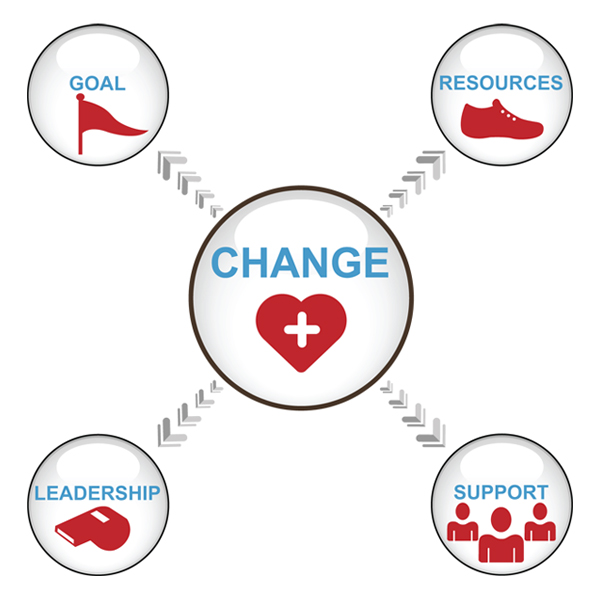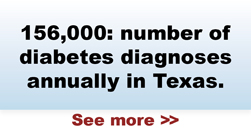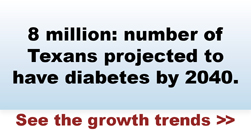Editor's Note: The RunTex Carrozza Foundation is a 501(c)(3) organization whose mission is to get Austin moving. The “Born to Run” program helps organizations create 1K to 5K races for their employees or communities. The program provides a training program, infrastructure, and guidance that make elite exercise protocols accessible to more people throughout Austin.
In this article, RunTex Founder Paul Carrozza discusses how our low-motion life is making us sicker—and his vision for changing the way Austin moves.
Paul Carrozza on the Dell 5K 2010
Forefront (FF): What is a “low-motion” life?
Paul Carrozza (PC): It’s pretty much the way we live our lives these days. We are sitting at desks, using our fingers and our brains instead of walking behind a plow or harvesting a crop. We are sitting in cars or on buses to get to our jobs instead of walking or riding a horse. Or we are telecommuting to meetings—just sitting and staring at a screen. We are living in manufactured environments where it’s always 70 degrees—and it’s comfortable so we don’t want to walk outside where it’s hot or cold.
FF: And how is that affecting our health?
PC: When we moved from behind a plow to behind a desk, we cut about 20,000 heartbeats out of our day. We slowed the production of serotonin and endorphins. We are not detoxifying our bodies or enervating our organs as efficiently as we should.
And without those critical chemical and biological activities, our bodies have become breeding grounds for illness and chronic diseases such as obesity, diabetes, depression, and cancer.
But it’s not like we’re all just sicker in the privacy of our own homes. Everyone is moving less and we all have to support the consequences of that low-motion world. We all bear the costs of increased healthcare in some fashion, but our productivity and educational achievements are suppressed as well.
FF: That’s an interesting challenge for Austin since technology is a critical lynchpin of Austin’s economic health and our community. How do we square this economic driver that pretty much demands people sit at desks—in fact makes it easier for people to sit—with our overall health?
PC: While we don’t have the same environmental drivers—the need to grow our own food or protect ourselves from the elements or predators—we still need to pump our blood and engage our biological functions. And typing isn’t going to do that for us.
We need to blend the benefits of a low-motion world with purposeful and meaningful activity, so we can create the physical effects needed to be healthy as we sit behind a desk.
FF: So toss out the computers and bring back the wooly mammoths?
PC: Well short of the next ice age taking over, we’ll have to develop the structures that will allow people to get healthy in sustainable ways for themselves. That will in turn create community habits and infrastructure for ongoing health across Austin.
FF: It sounds like more than 30 minutes a day on the treadmill and calculating Weight Watcher’s points.
PC: Definitely. Those are easy things for a doctor to prescribe, and some people may see some benefits, but it’s not institutional—or accessible to the entire community.
We’d like to see more people adopting the habits of endurance athletics to get moving—to benefit themselves as well as all of Austin.
FF: So we all need to run marathons?
PC: No—that’s not safe for everyone. People need to start with an entry distance like the 5k and work their way up.
The Born to Run program is helping people access endurance athletics that will help them achieve meaningful health benefits. In training for endurance events, they are improving their immediate health and learning habits that can last a lifetime. We are doing it in such a way that they are part of a community of people learning those habits. With more and more communities like that, we can create an infrastructure across Austin that will support meaningful and purposeful fitness.
FF: But there are a lot of people across the city that can’t access elite training. Or who would never consider that they could be part of the Austin running culture because of life-long couch potatoism or economic barriers—real or perceived.
PC: That’s the beauty of Born to Run. In working with individuals and their immediate communities, we are democratizing purposeful fitness for all of Austin. We want for this to reach everyone in the community. We are working with churches, schools, companies, neighborhood groups, and volunteer groups from every walk of life and demographic category to make sure everyone can reap these benefits.
And it’s that process that will institutionalize endurance athletics and purposeful fitness for Austin. And with that we’ll see change—in our bodies and in the collective health of our city.
About Born to Run
The Born to Run endurance athletic program is a 12-week program that is getting individuals across the city to participate in an endurance athletic event. The program is modeled on an organizational change model. It starts by activating individuals and, with repetition and growth, will activate Austin and improve the health of our entire community.
More than 100 organizations throughout Austin are adopting the Born to Run program for their employees, clients, or members. The model each of them uses is illustrated below. To find out how you can bring Born to Run to your group and join the movement, contact Paul.
There are four key drivers of change in the Born to Run model:

Leadership = Coach
We start with a professional coach who knows how to guide a developmental program. This is not an elite athletic coach—this is someone who knows how to move a coach potato along safely and effectively to cultivate a person who can be active and fit for a lifetime.
Then from within the program, we identify new coaches—people who see the program, adopt the activities, and, as part of their training, learn to teach it to others. We find someone who has made it to step four or five in the process and they can then help others conquer steps one or two. This is what makes it scalable. As one person who may or may have not been active before sees how to apply the recipe, we are cultivating success and breeding success.
Support = Team
After people have a coach they trust, they need a team they can trust. Even though we are cultivating individual strength, the individuals must have a shared vision and purpose that galvanizes them toward completion.
In Born to Run programs, there is no sense of ahead or behind—no fast or slow group. The group is committed to each individual reaching their goals, because the individual attainment serves the group effort.
Resources = Gear
There are a number of different ways that resources can play out for an athletic endurance event. The first is in the proper gear that is properly fitted to the individual. One shoe isn’t going to fit everyone, and the same type of shoe isn’t going to fit everyone.
The RunTex Carrozza Foundation is helping provide shoes, equipment, and race infrastructure for those organizations and groups that need them.
Goal = Finish Line
The fourth integral piece in this training program is crossing the finish line. It gives people something to shoot for that they can achieve. It’s easier to mentally focus on getting across a finish line than on avoiding sweets and gearing up to sweat. In the act of reaching that finish line, people are gaining health benefits, but that’s not the main focus.
As more and more people cross the line, the benefits of health and well-being spread throughout the community.

|










